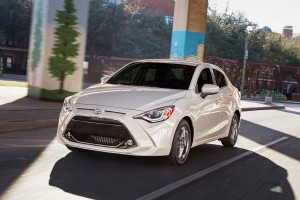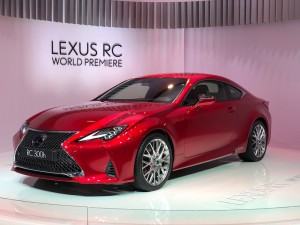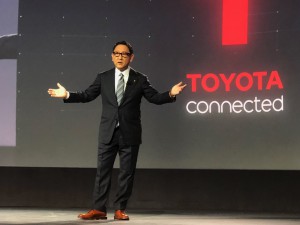Toyota Motor Corp. reported a 28% increase in its net profit for the July-September quarter, earnings buoyed by strong demand in key global markets, including the Americas, Asia and Europe.
The Japanese giant also advised that it expects to see earnings push past earlier forecasts for the full year, in part driven by unexpectedly strong demand in China. Sales of the Lexus brand, have been booming there, despite a slowdown in the overall Chinese market.
Sales gains were only one of the factors that propped up Toyota’s bottom line, said Senior Managing Masayoshi Shirayanagi. Referring to aggressive cost-cutting efforts, he said, “We are steadily making progress toward achieving our challenge-level target.”
(Toyota joins in the fun at SEMA with some hot concepts. Click Here to check out what it and other automakers brought to the party.)
For the second quarter of its fiscal year, Toyota net reported a profit of 585.1 billion yen, or $5.2 billion. That was up from 458.3 billion a year ago. Its operating profit was 579.1 billion yen, or $5.11 billion, up from 522.2 billion during the second fiscal quarter last year. But that was slightly below the 584.89 billion yen consensus forecast.
Quarterly revenues, increased by 2%, to 7.31 trillion yen, or $64.7 billion. For the first half of the fiscal year, earnings have risen 3% year-over-year, to 14.67 trillion yen, while the automaker is forecasting the figure will reach 29.5 trillion for the full year, or $261 billion. That would mark an all-time record.
On a unit basis, Toyota sold 2.183 million vehicles between July and September, up from 2.175 million.
Toyota raised its earnings forecast for the full year to 2.4 trillion yen, or $21.2 billion at the current exchange rate. It had previously estimated it would earn 2.3 trillion yen.
Toyota had a number of things going for it during the most recent quarter. Demand grew in Europe and Asia, particularly in China, where Toyota and its Lexus brand countered the overall slowdown in the world’s largest automotive market. One factor working in its favor has been the reduction of vehicle import tariffs from 25% to 15 percent. (The exception is the hike to 40% for American-made vehicles as part of the U.S.-China trade war.)
Lexus was a relative latecomer to China, and “we still have a small brand,” Didier Leroy, Toyota’s chief competitive officer, said during a Tuesday briefing. But, “That means that we have a lot of room to improve and Lexus has strong potential in China.”
(It’s official. Click Here to find out when and where the reborn Toyota Supra will debut.)

Toyota's US CEO wants to rethink its model mix - which could mean bad news for some slow-selling passenger cars, like this Yaris.
While Toyota also gained ground in South and Central America, however, it saw demand slip in the North American market. That was, at least partially, the result of a model mix out of tune with the shift from passenger cars to light trucks. Demand for the little Yaris hatchback was off 38.2% in the U.S. for the first 10 months of this year, while the long-popular Corolla fell 11.6% during the same period. The big Highlander SUV, on the other hand gained 14.1 percent, while sales of the compact RAV4 increased 1.6 percent.
In an interview with the Wall Street Journal, Jim Lentz, the CEO of Toyota’s North American operations said, “We are taking a hard look at all the segments we compete in, to make sure we are competing in profitable segments and that products that we sell have strategic value to the brand,”
While Lentz didn’t focus on specific models, his comments appeared to signal a shift away from some passenger car lines in favor of adding more sport and crossover-utility vehicles.
(Toyota and Subaru order recall of twin sports cars due to stalling issues. Click Here for more.)


